Choosing the right paint mixing machine is very important. It affects product quality, production speed, and cost. This guide explains the different types of mixing equipment. It helps you select the best machine for your needs.
Paint mixing equipment is crucial in manufacturing. The right choice ensures high-quality products. It also improves efficiency and controls costs. Machines are categorized by their mixing capabilities and the applications for which they are used. There are four main categories.
1. High-Speed Disperser
This is a key machine in paint production. It uses a toothed disc that spins very fast. This creates strong shear forces. These forces break down pigments evenly. They keep pigments suspended stablely.
Key features include adjustable speed, usually 0-1,500 rpm. Power is typically between 5.5 and 55 kW. The lift can be hydraulic or mechanical.
2. Pneumatic Mixer
This mixer runs on compressed air. It is safe and explosion-proof. It is ideal for solvent-based paint workshops.
Vane motors can reach speeds up to 3000 rpm. Piston motors offer higher torque for thick materials. Speed adjusts by changing air pressure. It has overload protection. It stops automatically if jammed, preventing motor damage.
3. Two-Component Spray System
This system is for reactive coatings like epoxy and polyurethane. It mixes the base and hardener precisely and instantly.
The external mix type uses two separate pumps. Each pump carries one component. Mixing happens at the nozzle during spraying. This prevents clogging in the pipes. It is perfect for fast-drying coatings that set in 20 minutes.
4. Powder Mixing Equipment
Machines like screw belt mixers are used here. They mix slowly with high capacity. A U-shaped trough has a rotating screw belt. This creates a three-dimensional mixing movement.
Stainless steel construction resists corrosion. A full-opening door makes discharge and cleaning easy. It is great for powder coating production.
High-Speed Disperser:
This is the most common type. It works well for medium and low-viscosity liquids. It is also used for pre-dispersing pigments.
The core part is a fast-spinning sawtooth disc impeller. It pulls material from the bottom. Then it throws material against the wall at high speed. This creates strong turbulence and shear.
Advantages: Simple design, easy to use and maintain, highly efficient. It comes in many sizes, from small lab beakers to big production kettles.
Disadvantages: Less efficient for very thick materials. Not good for very fine, nano-level dispersion. The open design can let solvents evaporate. It might also add air bubbles.
Applications: Pre-mixing and dispersing latex paints, industrial paints, inks, and adhesives.
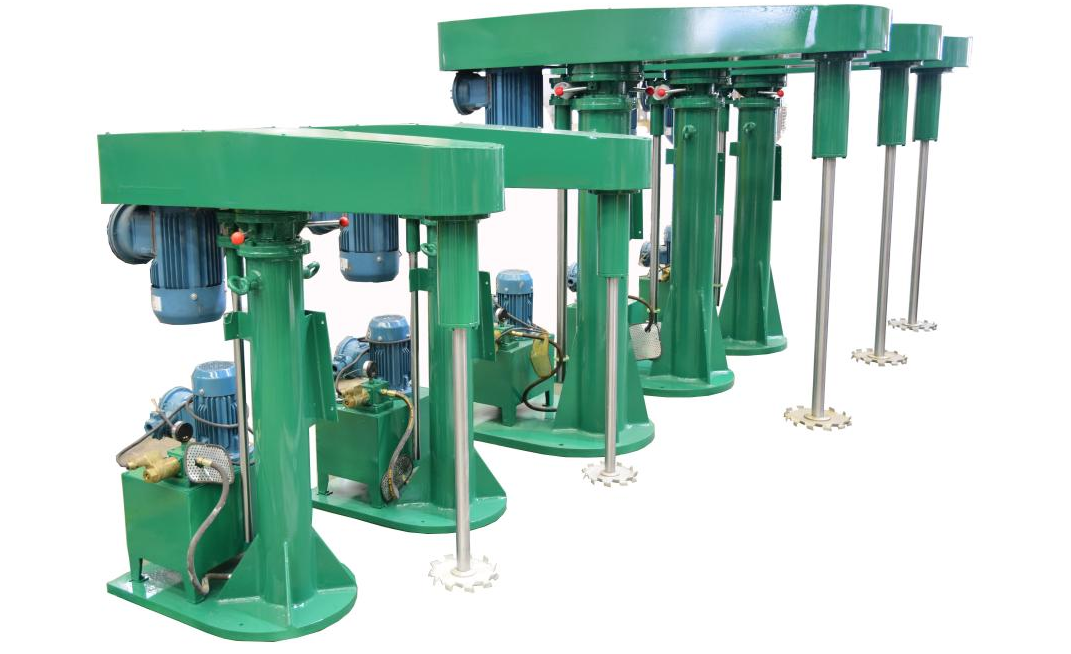
Agitators:
These are for gentle mixing, not high shear. They are used for low-viscosity, sensitive materials. They are also used for homogenization and color matching after dispersion.
They use paddles, anchors, screws, or turbines. Speeds are relatively low.
Advantages: Gentle shear, protects material structure, creates fewer bubbles and less heat. Good for a wide range of viscosities, especially high-viscosity.
Disadvantages: Not good for dispersing pigments. Mixing can take a long time.
Applications: Mixing low-viscosity varnishes, blending high-viscosity putties or sealants. Used for mixing already dispersed paints and preventing settling in storage.
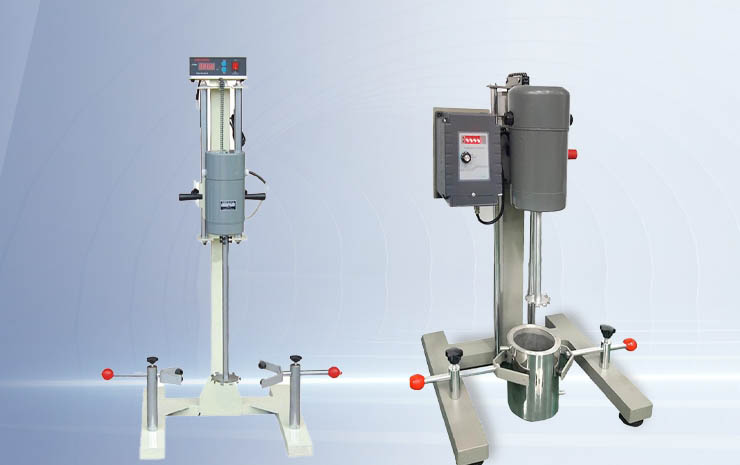
Grinding Disperser:
This machine gives very fine dispersion for high-quality coatings and inks. It is often used after high-speed dispersion for fine grinding.
It uses grinding media (beads) in a narrow chamber. The beads move fast, providing impact, shear, and friction. This breaks up particle clumps.
Advantages: Very fine dispersion, down to microns or even nanometers. Excellent quality.
Disadvantages: High equipment cost. Complex to operate and maintain. Low production efficiency. Cleaning and changing colors is difficult.
Applications: High-end uses like automotive paint, premium industrial paint, metallic paint, pearlescent paint, and electronic ink.
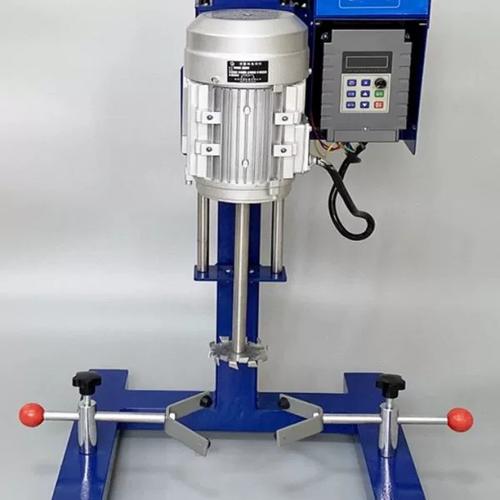
Dual Planetary Mixer:
Made for very thick, paste-like materials. Examples are silicone sealant, epoxy glue, paste ink, battery slurry, and putty.
The planetary carrier drives two agitators. They rotate on their own axes and orbit the center of the kettle. A scraper rotates close to the kettle wall. It removes stuck material for seamless mixing. This gives high heat and mass transfer efficiency.
Advantages: No dead spots in mixing. Perfect for high-viscosity materials. Can do vacuum degassing. Seals very well.
Disadvantages: High cost and complex structure.
Applications: Silicone sealant, epoxy adhesive, paste ink, paste cosmetics, lithium battery electrode slurry, and high-viscosity putty.
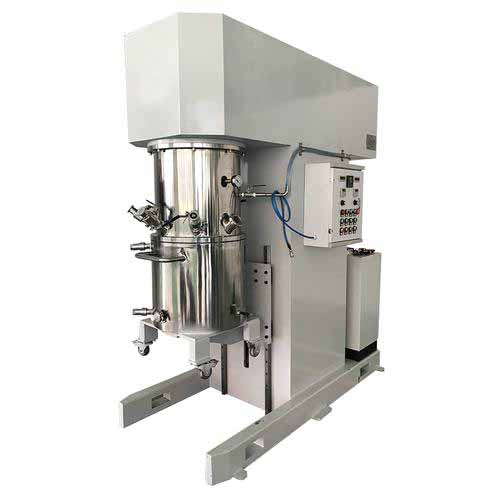
Static Mixer:
This is not a machine with moving parts. It is a element placed inside a pipe.
Fluid flows through specially designed internal blades or channels. The fluid is continuously divided, put back together, and twisted. This mixes it continuously.
Advantages: Simple, compact, no moving parts. Needs no maintenance. Uses little energy. Mixes fast and evenly, especially for low-viscosity liquids. Easy to install in-line.
Disadvantages: Not good for high-viscosity materials or solids. Limited dispersion ability.
Applications: Continuous online addition of additives. Colorant tinting in automated systems. In-line mixing for low-viscosity two-component coatings.
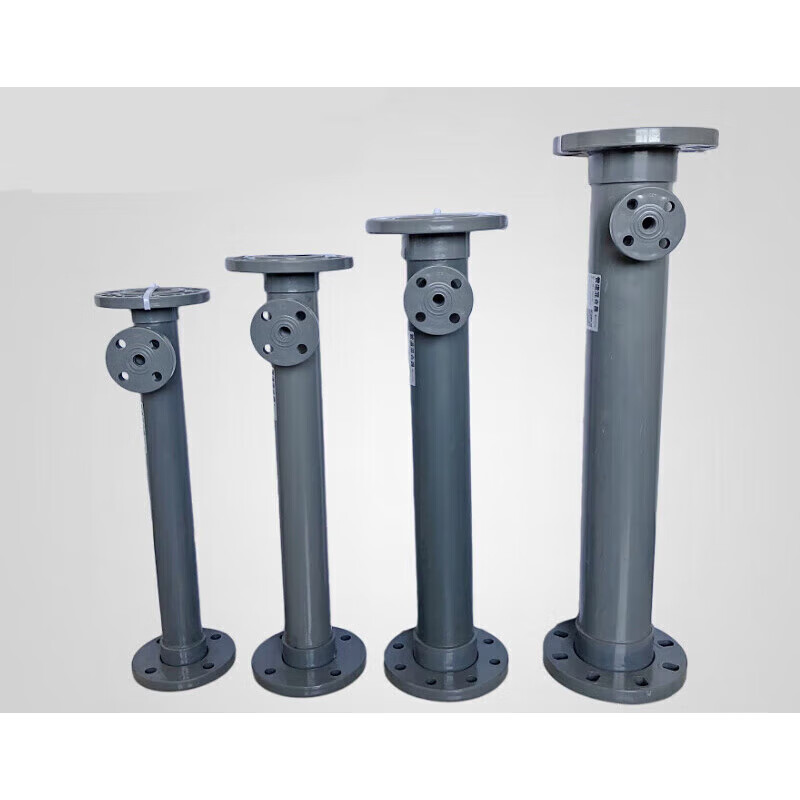
Viscosity is the main factor. Low-viscosity coatings (<100 cps), like water-based latex paint, need a standard mixer. Medium-viscosity materials (100-5000 cps), like oil-based paint, need medium-power equipment. High-viscosity resins (>5000 cps) need a high-torque model.
Check for corrosion. Use 304 stainless steel for standard solvent-based paints. Use 316L stainless steel or PTFE-coated parts for chlorine or acidic ingredients.
Solid content and particle size matter. High solids or large particles (like titanium dioxide) need a multi-stage disc or a bead mill system. Sieve plates and grinding beads work together to improve fineness.
Production scale sets equipment capacity. Use 5-20L portable pneumatic mixers for labs or touch-ups. Use fixed hydraulic lift dispersers for batches of 100L or more.
Mixing accuracy affects the method. Use mechanical stirring for regular one-component coatings. For two-component coatings with a ratio tolerance >10%, use a low-cost mechanical system with a proportioning gun. For strict ratios (<4% error), an electronic proportioning machine with internal mixing is essential.
Special needs need special features. Vacuum degassing requires a sealed tank. Heat-curing coatings need a jacketed heating system. For fast-acting outdoor use, choose external mix spray equipment to avoid curing problems.
1. Key Points for High-Speed Dispersers
Speed control is key for process adaptation. Choose variable frequency drive models. Electromagnetic speed regulation is okay for water-based paints. Oil-based paints must have explosion-proof variable frequency motors.
Key parts should be 304 stainless steel, like the dispersion disc and shaft. Be careful with common carbon steel chrome-plated shafts. Check their corrosion resistance.
Advanced options: A dual dispersion shaft design can boost efficiency by 30%. A vacuum system removes bubbles. A multi-stage dispersion disc optimizes particle size distribution.
2. Scientific Selection of Pneumatic Mixers
Match power to the job.
20L low-viscosity paint: 1/3HP vane motor (high speed).
50L medium-viscosity resin: 1/2HP piston motor (high torque).
200L high-viscosity asphalt: 1.5HP heavy-duty motor.
Choose the right propeller: Three-blade propellers homogenize low viscosities. High-shear dispersion discs break up pigment clumps. Extended-blade propellers reach material on drum walls.
Safety: Use an all-copper pneumatic motor in explosion-proof areas. Use waterproof models in damp places. Use 316 stainless steel parts for food-grade paints.
3. Professional Selection of Two-Component Equipment
Fast-curing paints need an off-the-gun mixing system (e.g., WH46-2). Mechanical proportioning adjusts from 1:1 to 18:1. A dual-piston pump separates and delivers components. Mixing happens only during spraying.
Precision electronic systems are for ratio-sensitive paints like automotive OEM. Servo motors control metering pumps. Accuracy is ±2%. They need regular calibration.
Airless atomization improves coating. It reduces paint mist rebound. It increases paint use by 30%. With air assist, it gives a highly decorative finish.
4. Powder Mixing Equipment Selection Strategies
For poor-flow materials, choose a ribbon mixer with a flying blade. This breaks up lumps and creates 3D movement.
Fully enclosed stainless steel is standard for powder coatings. A full-open door ensures no residue.
Calculate capacity: For 400kg per hour processing, choose a 100kg capacity model. Match it with a 15-minute per batch cycle (includes loading and unloading).
1. Four-Step Performance Verification Method
Test material authenticity: Use stainless steel identification solution on 304/316 marks. This prevents carbon steel impersonation.
Key tests: Check shaft radial runout at no load (<0.05mm). Test temperature rise under load (temperature rise ≤40°C after one hour of operation).
Check mixing uniformity: Use colorimetry or fluorescent tracers. Sample and test component consistency from different spots.
Verify safety certifications: Explosion-proof equipment must have ATEX or CNEx cert. The IP rating of electrical parts must fit the environment.
2. Full-Cycle Cost Optimization Model
Avoid procurement traps: A cheap standard model for an oil-based workshop may need extra explosion-proof changes. This can cost 30% more than an initial explosion-proof model.
Calculate energy use accurately: For pneumatic tools, factor in air compressor efficiency. Real energy use may be double that of electric equipment. For high-power dispersers, a permanent magnet motor saves 25% energy.
Predict maintenance costs: Electronic proportioning system spray guns cost over ¥10,000 each. Mechanical mixing guns cost thousands. Progressive cavity pumps save 60% on seal replacements compared to plunger pumps.
Selecting paint mixing equipment needs a systematic approach. First, identify the paint type. Then, analyze the core parameters. Finally, focus on the process characteristics.
Future trends include modular design. Basic dispersers will have ports for vacuum or heating for future upgrades. Data connectivity is another trend. IoT sensors will monitor viscosity in real time. They will auto-adjust speed and ratio.
Combine scientific selection with strategic planning. This positions your productivity well in a competitive market focused on quality and efficiency.